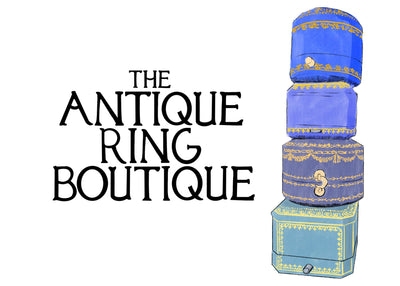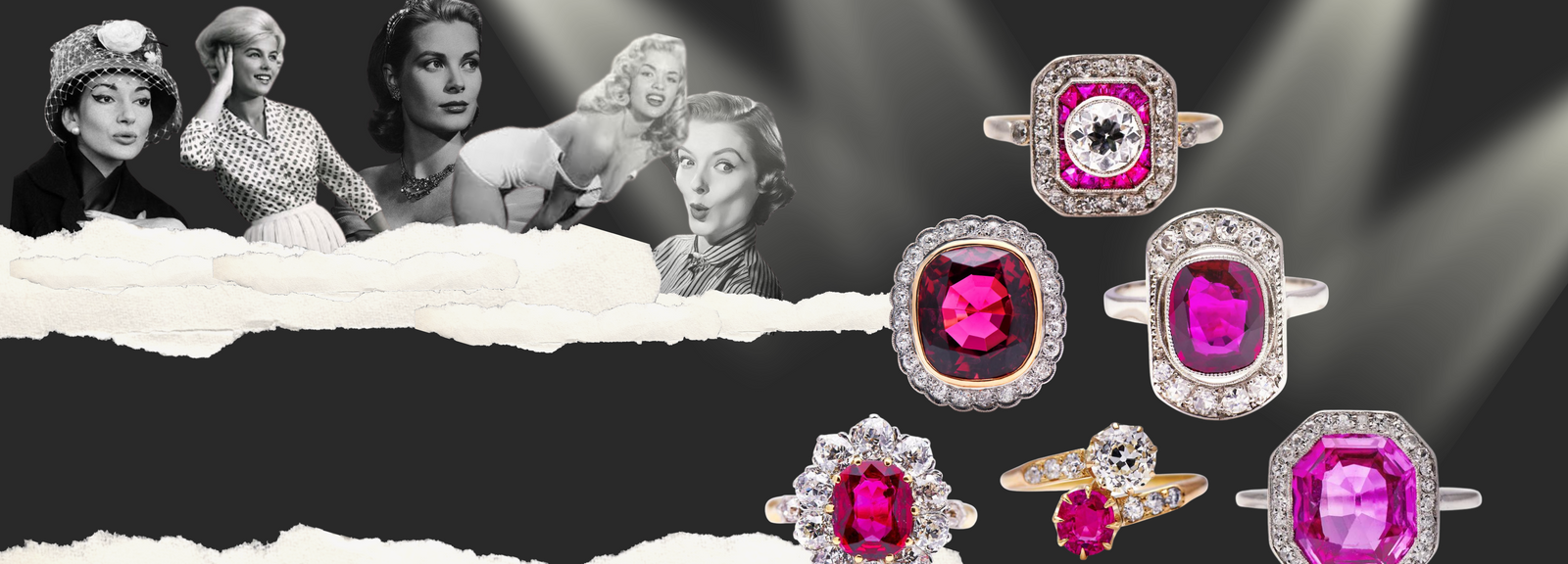Rubies are one of the 4 precious gemstones, alongside diamonds, emeralds, and sapphires. They belong to the corundum gem family, known to be the second most rigid gem material in the world, coming second only to diamond. In the 17th and 18th centuries, rubies and diamonds reigned equally and were often paired together to produce dazzling and impressive ring designs.
A BREAKDOWN
~Origins~
Rubies were first discovered at a mining site in Mogok, Myanmar as early as 2500 B.C. India, Sri Lanka, Pakistan and Afghanistan have also been long regarded as rich sources of rubies. Europe's supply of naturally occurring rubies is fairly limited, however, they can be found in the city of Prilep in The Republic of North Macedonia.
~Colours~
Prized for their notable rich, red-pink hue and held in high regard for their connotations to purity, nobility and success in love- it is no surprise that ruby rings are a well-loved choice for an engagement. Rubies vary in shade, The brightest and most valuable being a shade of red referred to as pigeon-blood red. They also occur in shades of raspberry, fuschia, vermilion and many others on this spectrum.

~Cut & Shape~
Rubies are most often cut into oval or cushion shapes however the structure of the ruby crystal itself is what primarily determines how it is cut. The angles of the facets determine how the light reflects within the stone, otherwise known as ‘brilliance’. If the faceting is asymmetrical, the sparkle can be dulled. In order to maintain and enhance the brilliance, gemstone cutters must fashion a ruby with great precision to allow the fire and brilliance to come through


~Clarity & Inclusions~
Similar to a diamond, a clear stone, without inclusions dictates a premium. Inclusions are the internal defects within a stone while the term ‘blemish’ is used to refer to surface flaws. Inclusions are naturally occurring and come about due to extreme pressure or heat as well as the foreign materials present in gemstones like guest crystals, fluids, and gases. The more inclusions a piece has, the lower its clarity grading will be as these may affect its brilliance or refraction. However, a ruby without any inclusions may indicate that the stone has been heat-treated. Untreated rubies with natural clarity are highly sought after. All of our ruby rings are untreated.
RUBY ENGAGEMENT RINGS
Browse our Ruby Engagement Rings or Vintage & Antique Ruby Rings
FAMOUS RUBY ENGAGEMENT RINGS






2 comments
Great article! Ruby engagement rings are a stunning and unique choice, symbolising passion and love. This guide provides valuable insights into selecting the perfect ruby ring, highlighting their timeless beauty and significance. Ready to find a ring that truly stands out? Explore the exquisite collection at Mens Rings Australia https://mensringsaustralia.com.au/product-category/all-rings/ for timeless and stylish options.
What a wonderful blog on Diamond and Ruby Ring! I liked it. Keep up the good writing.